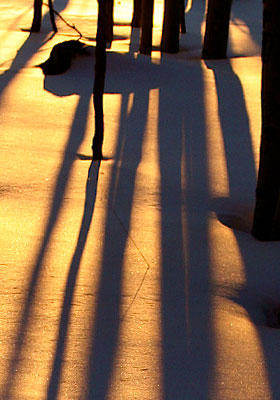Posts Tagged ‘spiritual practice’
Saturday, January 10th, 2015

As I weep over the multi-layered tragedy in France, I am also aware of pain in other areas, both personal and institutional, all around us. The pain raises that age-old question once again, a question that is more dramatic than ever in this age where we are exposed to global events in the media in a very tangible way. What is our role when we see suffering, and how do we handle our feelings about it?
When I move away from the huge issues surrounding terrorism, religious intolerance and violent fundamentalism and concentrate on my own life, certain themes become clear. Some examples…
Clients always come to me with a story, and I come to myself with my own stories. All of us want these stories solved, and we usually approach them by trying to figure them out. When we get engaged on that level, we usually get caught in a loop, going round and round. I tell my clients and myself, “The answer does not lie within the story.”
My shamanic training taught me to be an ally for clients by looking at their story “through a different lens.” Instead of engaging with the drama, my job is to hold space for a larger possibility.
The story has brought the client to a crossroads, where there is a decision to be made. Do I take the same road I’ve always taken when issues like this come up, or do I take a road I’ve never taken?
I ask them to choose the road not taken, which is to engage not from the “smaller” self that becomes victim to every drama, but from the larger self which knows better. This self can look at things from a larger consciousness, from the soul level. From that level, there is a big, long journey visible.
And so the larger self can say about the current tragedy, “Of course you have these emotions about it.” And then that soul-self can add, “And what could be good about all this?
On a personal level, what could be good about a tragedy is that someone might respond to it by deciding to go down the road of truly seizing their life and going after their heart’s desire. Now there’s an exciting opportunity!
On an institutional level, when things fall apart, the good thing could be that the leadership sees old patterns that are not sustainable and embraces a larger vision that really serves their dream and also serves the planet. Hooray!
And on a global level, the good thing about a terrible tragedy is that it brings things to light that have not been recognized by the general populace, and they have the chance when they see what’s wrong, to stand for a new and brighter road to a different future.
The crossroads in all three situations present the choice between submitting to something that may feel like fate, or seizing our soul’s true destiny. I would like to hold the vision of that destiny, and to take a stand for that.
I do that through spiritual practice that reminds me of who I truly am and of my unity with unseen spiritual support. And I hold energetic space for change to flow through me and through others, who will make their own choices.
This is a tough discipline for sure. But that is what we are being asked to do, and why we may be on the planet at this time. So join me in responding to it all with–along with our natural grief and compassion–a larger and more powerful force that holds it all.
Tags: consciousness, creativity and empowerment, living today, managing change, meditation, non-attachment, perception, spiritual practice, The Beauty Way, transitions
Posted in conscious evolution, consciousness, managing change, meditation, overcoming fear, self-healing, shifting how we see, shifting paradigms, spiritual practices, Tools for seeing ourselves | 2 Comments »
Wednesday, January 30th, 2013
This is the first of a series of blogs where I’m going to share some techniques I’ve developed for looking deeply within, using the lens of our creative inner eye. I’ll pose a question that I want to explore and share with you, and then present that question using several different processes.
The first question is, what does my wild heart desire? By my wild heart, I mean the part of my heart that has not been domesticated or tamed by others, by my own traumas and wounds or by the wounds and expectations of the culture. This heart has not been conquered; it is indigenous, in close relationship with the earth and nature and the heavens. It is wild.
The first process is to use the core concept developed by The Painting Experience (processarts.com) to make a painting by feel. That is, I pose the question before a blank paper and my palette, which only has the primary colors, for simplicity. I clear my mind of thoughts as much as possible.
What color wants to go onto the paper? First, it is blue. So I paint blue wherever it wants to go on the paper until that feels finished. Next, I want to make a green of different strengths, so I mix my blue with some yellow and paint until the energy for expressing green quiets. Now I want a bit of red, and then a lot of yellow. And then I feel finished. This painting only takes me minutes, though I have done many that become more complex.
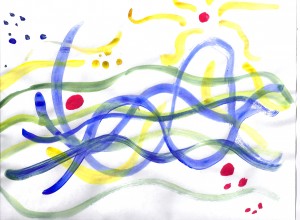
Now I leave the Painting Experience behind, because they do not analyze or name part of the painting. I will involve my left brain and my right to see what message or information I can get from my painting.
What does the blue feel like? And how does the feeling relate to a part of me?
Blue feels like my beloved ocean, like waves, like the part of me that is fluid, flexible, deep, clear and free.
And the green?
Like rolling hills, a beautifully carpeted, lush surface on Mother Earth that supports all life here. The part of me that is both solid, grounded, earthy, and graceful.
The red is like drops of blood, like the life blood that is both from wounds and passion that punctuates and sustains life here on earth.
The yellow is sunlight, the energy of warmth that sustains life and moves through every part of it. My wild heart wants a warm, lively connection with me and with my journey.
Feeling into the painting, is there more I want to add?
I want to finish with some blue dots in the upper left hand corner that feel like stars, a portal into the unknown Universe of which I am a part.
And so I ask the painting as a whole: What does my wild heart desire?
My wild heart wants freedom, flow, beauty, pulsating life, a connection to the sun and stars and to water and ground—to All That Is. Including a warm, lively connection with me and my journey!
And so what if I made those qualities of experience the benchmarks for success? What if success in my life were to mean pleasing my one wild heart? Hmmm.
And what would that mean for you? I look forward to your comments!
Tags: beauty, consciousness, creative imagination, creativity and empowerment, inner landscape, perception, spiritual practice
Posted in bringing out your gifts, creative imagination, Creativity, creativity and empowerment, Guided imagery, healing, Imagination, inner landscape, seeing oneself, self-healing, shifting how we see, shifting paradigms, Tools for seeing ourselves, Uncategorized | No Comments »
Monday, November 19th, 2012
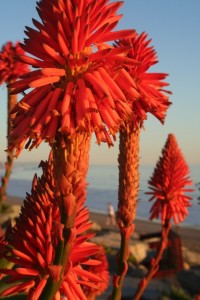
flower power
What is your relationship to power?
Last time I sat in sacred circle with my Advanced Flying Lessons group, I marveled at the experience we had when we asked the spirits of the universe to help us step into authentic power.
World events continue to teach us all–regardless of political persuasion– about some types of power we just can’t afford any more. For instance, exerting power to manipulate or force or restrict another unjustly is an old form that just doesn’t work well any more. Being conscious of what we don’t want to do opens a space for us to re-define power.
Our group agreed that the old forms of power in the outer world are mostly based on fear. And we all were ready to let go of those in favor of the kind of inner power that is sourced in love, truth and joy.
And so, we journeyed together and experienced the natural power that resides in us all. Like a seed, this power that is borne within us can grow and flower and create new life. It can produce fruit and blossoms that nourish others. It can heal old wounds. It can change the world. It can fuel lives that are more meaningful than any generation’s lives have been.
This is the moment, and we are the ones.
And so, we want to nourish this seed within us. What will be our fuel? What is the premium fuel that works for you? Flying Lesson #2–Bring Enough Fuel for the Journey–is all about this exploration.
I invite you to put your hand over your second chakra on your abdomen. Imagine a seed of power there that is alive, dynamic and growing already. When you contact the life force, the power of love and purpose within you, you bring it alive. It wants to be seen. Feel the energy of it–that is a way of “seeing” it. Whenever you do this, it becomes more visible and practical in your life.
If you can trust that you already have all the power you need within you, and if you can trust that your power is not only sufficient but good, then you can let go of fear.
“Allelulia!” as one participant in our group said. Time for Thanksgiving.
May you feel the gratitude and power within you at this holiday time.
with Love and Light,
Pam
Tags: consciousness, creative imagination, creativity and empowerment, Flying Lessons: How to Be the Pilot of Your Own Life, Flying metaphor, perception, Photography, spiritual practice
Posted in bringing out your gifts, coaching, conscious evolution, consciousness, creative imagination, creativity and empowerment, divine feminine, Flying, Guided imagery, healing, Imagination, nourishing ourselves, returning to essence, seeing oneself, self image, shifting how we see, shifting paradigms, spiritual practices, Tools for seeing ourselves | 3 Comments »
Wednesday, October 31st, 2012
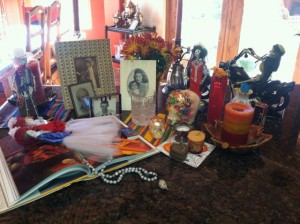
First, a bit of history about Halloween, All Saints Day and All Souls Day.
This time of year was known as Samhain by the Celts, meaning “summer’s end,” and named for the lord of death who allowed souls who had died to return to earth on Nov. 1. Some who had been harmed during their lives returned as ghosts, witches, goblins and elves and haunted their living persecutors. Cats were considered sacred because they had been humans and were changed into cats as a punishment for misdeeds. To protect against these scary spirits, on the eve of Samhain, people put out their hearth fires and the Druids (priests) built a huge bonfire of sacred oak, offering sacrifices of crops, animals and some say even humans, telling fortunes of coming year by divining the ashes and remains. People wore costumes of animal heads and skins. They took fire from bonfire to light their hearths again.
Local traditions developed from there. The Irish held a parade, following a leader dressed in a robe with a mask head of an animal, and begged for food. And, they started the jack-o’lantern. Someone named Jack couldn’t enter heaven because he was a miser, and couldn’t enter hell because he had played practical jokes on the devil; so he had to walk the earth with his lantern until Judgment Day.
Later, after the Roman conquest of Britain in AD 43, an autumn festival honored Pomona, the goddess of fruits and trees, connecting the apple with the celebrations, which were combined with Samhain.Christianity brought in All Saints Day on Nov. 1, honoring those who had entered heaven. Some of the pagan celebrations for All Hallows Eve remained, and took new forms.
During the Middle Ages the belief arose that it was the souls in purgatory who appeared on All Souls Day as witches, toads, goblins, etc. to people who had wronged them. This began the custom of feeding, honoring and appeasing the spirits. In addition, celebrations for the Feast of All Souls began in the early days of the church, for those departed who were in purgatory, hoping for entry into heaven. These celebrations have evolved in Mexico where graves are decorated on the morning of All Souls, Nov. 2. In Louisiana, relatives whitewash and clean tombstones and decorate them with garlands, wreaths, crosses and flowers.
If one of these traditions is part of your custom, then you have your own meaning associated with this time of year when the veils between worlds is thin. If not, what can we make of all this?
Well, I see it as an opportunity to make friends with death. First, we can remember our loved ones who have passed by creating our own ceremonies: telling stories, making altars, visiting their graves, or just by lighting a candle. We’re not only honoring them, we’re bringing the seen and unseen worlds closer together—not just for the spirits, but for ourselves.
Death is such a taboo subject in our American culture. Other cultures have fun with this time of year, and take it seriously at the same time. In Mexico, lots of cooking and preparations are happening right now, to honor those who live on in our hearts. Humor, whimsy, music and creativity are all part of the recognition of the part death plays in all of our lives.
In Tibet, it’s customary to begin preparing in midlife for one’s death. In yoga, we end our asana practice with savasana, the “corpse pose,” where we let go and allow our thoughts and our illusions of control to “die.” When we sleep we let our day “die,” and hopefully our troubles too. We enter the land of the dark, closing our eyes to the seen world, and entering another world we only partly see in dreams.
In the morning, we don’t remember all of where we’ve been, just as we don’t consciously remember being in the spirit world while we’re on earth. Day and night, dark and light, life and death are the yin and yang of our reality.
In the shamanic tradition, we say that we don’t want death “stalking” us, which happens when we live in fear of it. So we make friends with it, knowing that we are, at our essence, eternal. Though we may have fears of dying, we live “beyond” our fear, because we know that our spirit will journey on when it leaves the body. This time of year is an opportunity to imagine that journey and to celebrate those who are on it.
May you find that the thinness of the veil brings you blessings this year.
Tags: creative imagination, creativity and empowerment, Essence, inner landscape, spiritual practice
Posted in All Saints and All Souls Day, creative imagination, Creativity, death and new life, Dreams, Imagination, inner landscape, Making friends with death, shifting how we see | 23 Comments »
Tuesday, October 9th, 2012

It’s so easy and delicious for me to sink onto a place of beauty in nature and feel safe in that “All Is One” feeling. Next to ocean, or stream, or wind through the pines I am reminded of the life force that courses through all things. I am in my safe landing space at those times.
And then we know there are other moments. Moments that suck. Moments that are almost intolerable. Moments when we don’t want to be here. Moments when we feel like life must be against us. These moments do not feel like safe landing spaces.
So what to do? Especially since those ‘other moments” are when we need a safe landing space the very most.
Well, I say we create beauty. We must.
I love to talk about Victor Frankl, because he is the most extreme example I can come up with of a human who could create beauty out of the most meager ingredients. A concentration camp survivor whose whole family was exterminated, he credited his survival to his decision to find meaning in every day.
If he could do that in those circumstances, surely I can do it in mine.
But how, in those moments of despair, frustration, fear, or anger do we create beauty? There is a lot of ugliness in the world, after all.
I think it’s a choice. About how to see. Without being a Polyanna, without denying, we can choose to see beauty.
I can choose to find the beauty in an ordinary task like peeling a vegetable that God made, or even cleaning a toilet I’m lucky to have. I can choose to find beauty in weeding a garden where I’m making room for new life. I can choose to seek out the beauty that accompanies some of the worst tragedies, where in the midst of great loss there is some moment of exquisite love. I can choose to not be blind, but just to see “through a different lens.”
Maybe this is part of our work on earth. At least it makes our journey here more lovely.
Do it for you. Create beauty just to make your day better.
Do it for someone else. See if that doesn’t make your day better too.
See if when you create beauty, it doesn’t make you feel safe somehow. Safe in the fact that you are a creator. Safe in the fact that there is beauty in the first place. Safe in the fact that creating beauty is a well-worn path. A sacred one. One which has eternity in it.
Ah, now you have landed. In a beautiful place. On solid ground.
Tags: beauty, consciousness, creative imagination, creativity and empowerment, Flying, Flying Lessons: How to Be the Pilot of Your Own Life, Flying metaphor, inner peace, musings, Nature and the soul, perception, Photography, spiritual practice, The Beauty Way
Posted in aviation, coaching, conscious evolution, consciousness, creative imagination, creativity and empowerment, Flying, happiness, healing, Imagination, nature as mirror, Photography, seeing oneself, shifting how we see, spiritual practices, The Beauty Path, Tools for seeing ourselves | 5 Comments »
Sunday, March 18th, 2012

I remember flying along this gorgeous coastline in Baja, Mexico, with my husband Jon. It was before I got my pilot’s license, and so when he urged me to stop photographing and take the controls, I got instant butterflies. 95% of me wanted to fly, but the 5% that was terrified had the capability of ruining everything.
This makes me think of the beginning of my career, when I was a classroom teacher worried about maintaining discipline. Even on days when I had 95% of the class involved and focused, I was always afraid of that 5% that might take those controls away from me.
If “flying” is a metaphor for the 95% of us that knows how to break free of gravity and soar, we still have to learn to deal with the 5% that suspects we might crash at any moment. I call this “communicating with the controllers,” which is Lesson 5 in my book, Flying Lessons.
The challenge of this lesson is dealing with negative feedback. That might include the kind of inner voice I heard when my husband urged me to take the controls and I was afraid I couldn’t do it. Or, it might be outer feedback, like the kind I would get from disruptive students.
I would submit that our reaction to both kinds is fear: fear of the fear we feel, or fear that we will not be able to stay in control. Or fear that we were incapable all along; thinking we were was just a lie. And fear can hijack a good intent, a calm mind, an open heart and a good experience.
The lesson I learned from Clio, my flight instructor, was about discernment. Which voices are telling the truth that will keep you safe and set you free? And where is your true voice, which you need to use when standing up for yourself is the answer.
Here’s a summary of Clio’s advice:
1. Be kind. The 5% may be afraid. Fear can make them (whether they are outer or inner voices) say terrible things. Take that into consideration.
2. Be fair. Remember, they are the 5%. Are you listening to the 95%, or are they just invisible, their hands folded politely on their desks, their voices muffled behind their modest smiles…What if you asked them to raise their voices in song?
3. Ask for help. Ask your partner, your friend, your angels, your guides, your God, whomever you trust the most for help. For listening. For caring. For hugs. For company. The 95% of the controllers are trying to help you survive.
4. Keep the whole journey in mind. Remember, it’s this part that is hard. The big picture journey probably has a much more beautiful arc to it.
5. Remember, everything is relative. You sometimes think the world is coming to an end. When yours looks like that, so does the larger one. Still, there are those other times when all is glowing, when the leaves of every tree are on fire with sunlight, and when the moon is huge and white and all-knowing. When life is holy. When you are perfect, just as you are.
Tags: consciousness, Flying, Flying metaphor, inner peace, living today, managing fear, perception, Photography, Self, spiritual practice, ups and downs
Posted in aviation, bringing out your gifts, children as teachers, coaching, conscious evolution, consciousness, creativity and empowerment, Flying, happiness, healing, loving ourselves, nature as mirror, nourishing ourselves, Photography, seeing oneself, self image, self-healing, shifting how we see, shifting paradigms, spiritual practices, Tools for seeing ourselves | 2 Comments »
Tuesday, January 24th, 2012

Sometimes I cringe when I meet someone who asks me what I do. Answering either “life coach” or certainly “energy medicine practitioner” or for sure, “shamanic practitioner” can lead to immediate Eyes Glazing Over Syndrome.
Sometimes I do better when I tell a client story, but the best approach is asking questions. Like, “Have you ever had the feeling that something is missing in your life, even if you’ve read a lot of books, had therapy or tried meditating?” (At this point, I am checking for “Woo Woo, Checking Out Now Syndrome.)
But I persist. “Do you ever feel confused about your purpose? Or feel that your passion for your life has gone flat?”
Even though such complaints are vague, most of us have experienced them. Someone who says “Absolutely not” would probably not want life coaching or any personal development enrichment.
In reality, we have all experienced feelings that some might call burnout, and others might describe as being out of balance. Even someone who has never quite found that path, that center, usually can recognize these symptoms. The vocabulary isn’t important. And so…what?
I would call the feeling of being in our center, on our path, feeling passion and purpose “the pilot’s seat.” And I would say that the one who has taken the pilot’s seat in such moments must be the essential self. The one who is all about our life force, or soul.
Sometimes the essential self manages to take the pilot’s seat “by accident,” or really without our effort. In those moments we might call grace, we simply know and we simply are.
When you’ve been there, it’s painful to be dislodged from the pilot’s seat, or to have it commandeered by sub-personalities, or by the ego, who is not well-connected to essence.
Sometimes just the awareness of being off-center is enough to correct the situation. Other times, we need help. We need tools. Here are some to consider:
- Deep talk, soul sharing with a friend or advisor who listens well
- Traveling into invisible realms for guidance, through meditation, prayer, dreams or shamanic journeying—or my Sand Spirits Insight Cards!
- Any breathwork or meditation system that leads you back into your heart
- Asking the Great Mystery for help
- Work with changing old beliefs and releasing old patterns
If any of this resonates with you, I invite you to call me for a complementary phone consultation. Or if this has helped you remember your own tools, please add your comment!
Tags: Being, centering, centering techniques, consciousness, Essence, Flying, Flying metaphor, inner landscape, living today, managing change, meditation, perception, Photography, Sand Spirit Insight Cards, spiritual practice
Posted in bringing out your gifts, centering techniques, coaching, conscious evolution, consciousness, Dreams, Flying, happiness, healing, Imagination, inner landscape, meditation, mindfulness, Photography, returning to essence, Sand Spirit Insight Cards, seeing oneself, self-healing, shifting how we see, shifting paradigms, spiritual practices, Tools for seeing ourselves | No Comments »
Tuesday, January 3rd, 2012
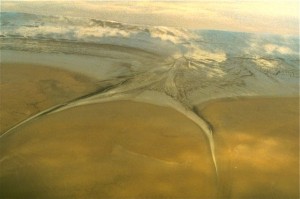
When I walk on the beautiful land in the Sutherland Valley, beneath the Catalina Mountains, the land reminds me that Mother Earth has a heartbeat, a rhythm. Being in nature attunes my body to her rhythm and reminds me of my own natural pace. So does meditation—it is a way of stopping to check in with the Source, and with my own body/mind, and re-calibrating.
I need to change my “attitude,”—an aviation term for the angle of the airplane– to pull the nose of my airplane up a bit and slow my speed.
When I think of the idea of slowing my pace, my “small mind” immediately panics at the thought. What will I miss? What will I not accomplish?
Fortunately my “larger mind” responds by asking, “Where are you going so fast? What is your destination or goal that is so crucial? Isn’t the journey the point?”
My small mind says nothing.
I remember Thich Nhat Hahn’s cautions about our pace, his advice about mindful walking and mindful eating and avoiding multi-tasking.
My small mind points out how many things I accomplish by multi-tasking. Is that really true? Recent research points out that our brains don’t operate at maximum efficiency when we do more than one thing at a time. Maybe we are sacrificing focus, intensity and depth of thought, excellence in problem-solving.
Perhaps I suffer from the aviator’s dreaded plague, “get-there-itis,” the disease that leads to unwise decisions like flying too late, or into bad weather, or when sick, or in conditions outside our expertise. If we crash, we might ask ourselves what was so important about that destination and how much time we really saved.
If I take time to gaze out the window, perhaps I’ll really see something like the scene in the photo of the water and cloud formations along the Sea of Cortez. What’s the hurry, really?
These are thoughts each of us must bring to consciousness as we pilot our way through a year that may challenge us to drop old patterns, to take responsibility for our own energy, to ask treasured family and friends to support us as responsible pilots who have taken the left seat. We may not be able to manage the strong winds of life, but we can manage ourselves.
What are your thoughts? Interact with us at Facebook.com/FlyingLessons!
Tags: Being, consciousness, Flying, Flying metaphor, inner peace, living today, managing change, meditation, musings, Nature and the soul, new life, own pace, Photography, spiritual practice, The Beauty Way
Posted in aviation, Being, coaching, conscious evolution, consciousness, Flying, happiness, healing, health, inner landscape, loving ourselves, managing change, meditation, mindfulness, new life, not doing, nourishing ourselves, Photography, returning to essence, seeing oneself, self-healing, shifting how we see, shifting paradigms, spiritual practices, The Beauty Path, Tools for seeing ourselves | No Comments »
Sunday, December 18th, 2011
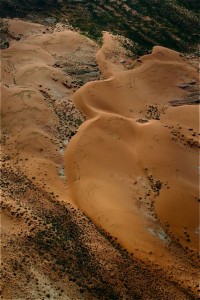
Holidays, despite the fun and joy and lights, can exacerbate the tensions within and between us. People are tired and expectations are high. Sometimes scenes we imagined would be warm and close present unexpected tension. When that happens, it can feel like our feet are stuck in the sand. Hard to move out of the situation or through it with much grace.
The old way would be to try to power through it. Summon the adrenaline. Fight back. Use mental or even physical force. We know where this has led in our personal and corporate lives–to wars of private and global dimensions. Surely it’s the season to something other than digging ourselves deeper.
In my new book, Flying Lessons: How to Be the Pilot of Your Own Life, I made the suggestion that we “rise to the occasion” by elevating our consciousness and finding a new, higher form of power.
Here are some practical suggestions, just in case you get a chance to practice! If you are triggered by someone and tempted to act out of the old kind of power, here’s an alternative formula:
1. Stop.
2. Breathe.
3. Call on your inner observer.
4. Ask that observer what the highest good could come out of this situation.
5. Ask how you might contribute to the highest good.
6. Review your options.
7. Make your powerful decision and then act from that place.
Now, how does the landscape look? Even that sand that once entrapped your feet might form lovely patterns from your position as the observer who can rise above the “gravity” of the challenge.
May you find true peace in your own heart during this holy season.
Tags: centering techniques, consciousness, Flying, Flying metaphor, inner landscape, inner peace, managing change, Photography, spiritual practice
Posted in aviation, conscious evolution, consciousness, Flying, inner landscape, managing change, nature as mirror, Photography, seeing oneself, shifting how we see, shifting paradigms, spiritual practices, Tools for seeing ourselves, Uncategorized | No Comments »
Tuesday, December 13th, 2011
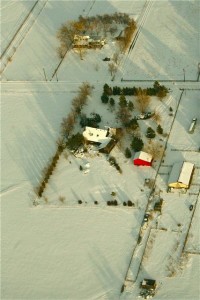
Just because you are reading this, I think you deserve congratulations for taking the time to read something just for you! No matter what your holiday traditions, this is a busy time!
Which is why I ended up reading my own Flying Lesson #2 over again. It’s Bring Enough Fuel for the Journey. Here are some excerpts and thoughts that struck me all over again as good advice for the season:
It’s food for thought that even though there’s no excuse for running out of fuel in the aviation world, we consider running on empty a normal part of our culture. In some circles there’s even a sort of nobility attached to being such a hard worker that everyone knows you never sleep. Even when people refer to someone as being a workaholic, rarely do they shake their heads in sadness or suggest a good treatment center. In many cases, overworking and overdoing is considered the means to success.
But when we have the ambition to fly, to rise above the gravity of our current situation, self-care becomes a crucial function. If we are going to push the envelope and move into a lofty territory where humans have only dreamed of operating we’ll have to pay attention to everything we’re doing and be conscious.
Being conscious is what piloting our lives is all about. And the proof of the pudding (especially the Christmas pudding) is how well we manage our own energy.
Have you ever stopped in the midst of rushing around to listen to a small voice saying something like, “What AM I DOING?”
This is the same voice who might ask other wise questions, like:
- How about a 15-20 minute power nap?
- What if I just took a hot bath instead of…
- Is the food I’m about to eat truly my premium fuel?
- What if I went to bed at 9 tonight?
- Do I really want to go to that party?
- Is this conversation nourishing me?
Never running out of fuel is about taking 100% responsibility for not burning out, not depleting yourself, and for knowing and cultivating the kinds of premium fuel that truly give you energy. Who else will do this for you?
Hmmm, maybe Santa. On the other hand, why not put this present right in the center of your being this minute:
Peace.
Joy.
Freedom to manage your own energy.
May you find the generous heart within that wants to give you these gifts this season.
In love and light,
Pam
Tags: consciousness, Flying, Flying metaphor, holidays, inner landscape, inner peace, living today, managing change, managing energy, managing stress, musings, new life, perception, Photography, spiritual practice, The Beauty Way, winter
Posted in aviation, conscious evolution, consciousness, creativity and empowerment, Flying, health, inner landscape, loving ourselves, new life, nourishing ourselves, Photography, seeing oneself, self-healing, shifting how we see, shifting paradigms, spiritual practices, Tools for seeing ourselves | No Comments »










